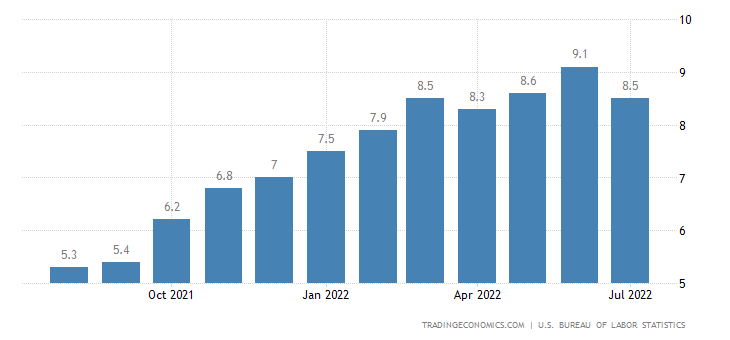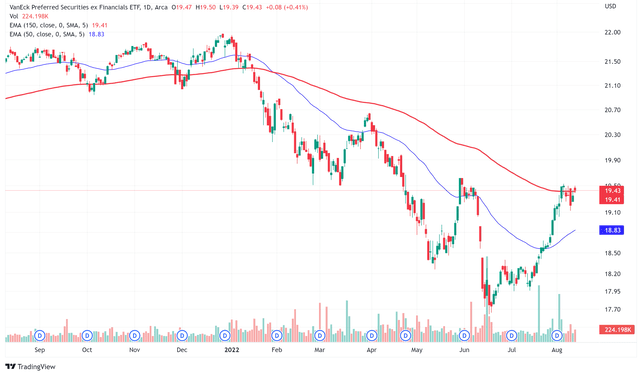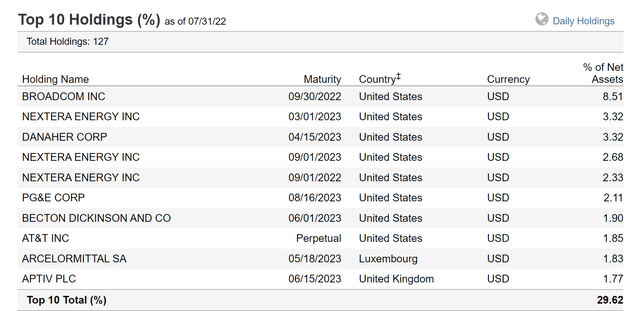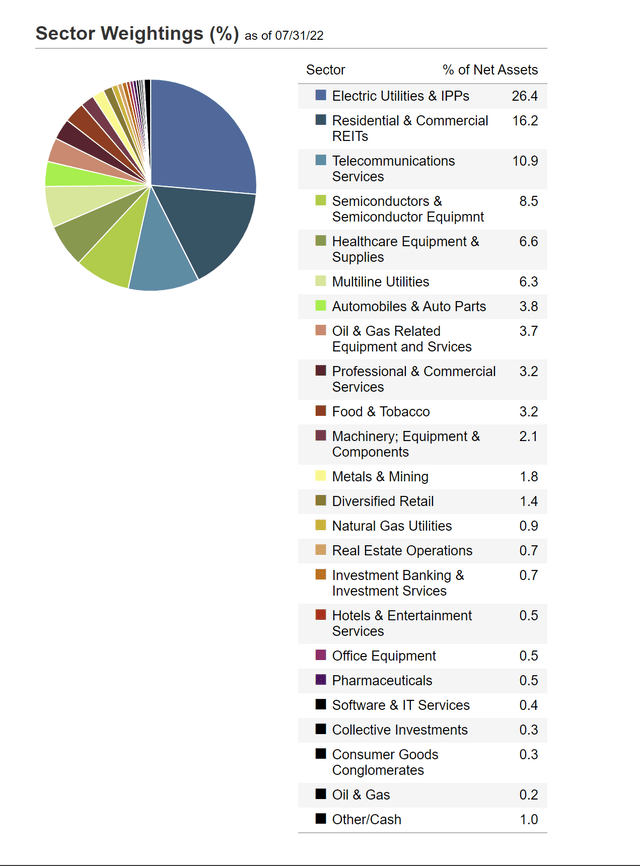designer491
I previously wrote about the VanEck Vectors Preferred Securities ex Financials ETF (NYSEARCA:PFXF).
After about a year, I wanted to re-examine whether the investment thesis still holds true. Obviously, the first half of 2022 was tumultuous for most investors.
I was actually quite disappointed with the PFXF over the first half of this year. The volatility was more “equity like” than I would have expected. Of course, a lot of that has to do with the fact that both bonds and stocks fell simultaneously in the first half of the year.
Over the summer rally, PFXF has managed to rally back to the 200-day moving average. The big question is whether this rally can continue?
The ETF has lost 9.82% this year with a dividend yield that is now 5.74%. At its low point this year the ETF was down over 16%. This is important to note as many preferred stock investors think that these securities are far less risky than common equities.
I am not adding to PFXF at the current time for two reasons; I am bearish on treasury bonds due to structural inflation risks and I have noticed that credit risks are not adequately pricing in the risk of recession.
Reasonable Expense Ratio
Let’s first go through some of the basics of the PFXF ETF. The net expense ratio of PFXF is 0.4% vs. most other preferred ETFs that charge close to 0.6%. Since these funds are much smaller than a major equity ETF and preferred securities are much less liquid, the ETF manager must charge higher fees to compensate for the extra work involved in managing illiquid instruments.
Liquidity Is Solid
PFXF is fairly liquid with a daily average of 265,000 shares traded per day. I am comfortable with the liquidity of this ETF but I would caution investors to make it a small part of their overall portfolio. When preferred shares go “no bid” as they do in times of market panic, it is extremely difficult receive fair value for your holdings.
Holdings Weighted Towards Utility Stocks
PFXF is heavily weighted towards American Utility companies. The top ten holdings account for almost 30% of the entire portfolio.
I would prefer less of a reliance on Utility companies. The ETF has cut back on its Utilities holdings over the past six months. Nonetheless, I am leery of companies that have high cap ex commitments in an inflationary environment.
From a geographic diversification standpoint, the fund has 94% of its assets in North America. The remainder are in England, Luxembourg, and Bermuda. I do not believe that investors are taking country risk with this ETF.
Inflation Risks
Inflation has ratcheted much higher since my original article in October 2021. There have now been five consecutive months where inflation has been greater than 8%. Obviously, I am not particularly enthusiastic about a 5.74% yield versus an inflation rate of 8.5%. Although I am in the camp that believes inflation has most likely peaked, I am also in the camp that believes there is now structural inflation that will settle in at a rate over 5%. Thus, I believe that all rates will have to head higher over the coming two quarters. In that type of environment, PFXF would not be an attractive investment.
Trading Economics
Recession Risks
Over the last couple of months risk markets have rallied. However, I am concerned that the high yield credit markets are not pricing in any severe recession risk.
Since July 1, 2022, the high yield spread has retraced over 60% of its move since the beginning of the year.
St. Louis FED
I do not believe that credit markets are accurately pricing in recession risks. The narrative that there will be a soft landing has become consensus. I think the odds of a recession are over 60% with a GDP contraction of 2-3% within the next year.
Subsequently, I do not feel that I want to take high yield risk in an instrument such as the PFXF at this time.
Conclusion
If you believe that inflation has peaked and that rates will not continue to grind higher, PFXF is a solid income yielding instrument. If you want to diversify away from financial companies or want to increase your Utilities exposure, PFXF is an excellent option.
PFXF provides a dividend yield of 5.74% and an expense ratio of 0.4%. Credit quality, liquidity and diversification are adequate.
However, since I believe that we have entered a regime of secular inflation north of 5% and I am concerned about credit spreads, I have decided that PFXF is a hold at this time.





Be the first to comment